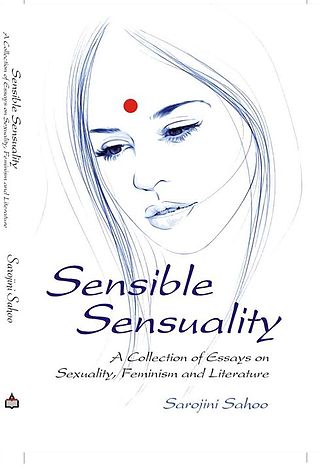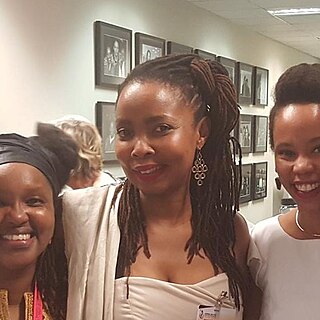
Misogyny is hatred of, contempt for, or prejudice against women or girls. It is a form of sexism that can keep women at a lower social status than men, thus maintaining the social roles of patriarchy. Misogyny has been widely practised for thousands of years. It is reflected in art, literature, human societal structure, historical events, mythology, philosophy, and religion worldwide.

Edward Theodore Gein, also known as the Butcher of Plainfield or the Plainfield Ghoul, was an American murderer, suspected serial killer and body snatcher. Gein's crimes, committed around his hometown of Plainfield, Wisconsin, gathered widespread notoriety in 1957 after authorities discovered that he had exhumed corpses from local graveyards and fashioned keepsakes from their bones and skin. He also confessed to killing two women: tavern owner Mary Hogan in 1954, and hardware store owner Bernice Worden in 1957.

Matriarchy is a social system in which positions of dominance without violence and privilege are held by women. In a broader sense it can also extend to moral authority, social privilege, and control of property. While those definitions apply in general English, definitions specific to anthropology and feminism differ in some respects.

"A Cyborg Manifesto" is an essay written by Donna Haraway and published in 1985 in the Socialist Review. In it, the concept of the cyborg represents a rejection of rigid boundaries, notably those separating "human" from "animal" and "human" from "machine." Haraway writes: "The cyborg does not dream of community on the model of the organic family, this time without the oedipal project. The cyborg would not recognize the Garden of Eden; it is not made of mud and cannot dream of returning to dust."

Transfeminism, or trans feminism, is a branch of feminism focused on transgender women and informed by transgender studies. Transfeminism focuses on the effects of transmisogyny and patriarchy on trans women. It is related to the broader field of queer theory. The term was popularized by Emi Koyama in The Transfeminist Manifesto.
Cultural feminism is a term used to describe a variety of feminism that attempts to revalue and redefine attributes culturally ascribed to femaleness. It is also used to describe theories that commend innate differences between women and men.

LGBTQ themes in horror fiction refers to sexuality in horror fiction that can often focus on LGBTQ+ characters and themes within various forms of media. It may deal with characters who are coded as or who are openly LGBTQ+, or it may deal with themes or plots that are specific to gender and sexual minorities.

Sexual Politics is the debut book by American writer and activist Kate Millett, based on her PhD dissertation at Columbia University. It was published in 1970 by Doubleday. It is regarded as a classic of feminism and one of radical feminism's key texts, a formative piece in shaping the intentions of the second-wave feminist movement. In Sexual Politics, an explicit focus is placed on male dominance throughout prominent 20th century art and literature. According to Millett, western literature reflects patriarchal constructions and the heteronormativity of society. She argues that men have established power over women, but that this power is the result of social constructs rather than innate or biological qualities.
Barbara Creed is a professor of cinema studies in the School of Culture and Communication at the University of Melbourne. She is the author of six books on gender, feminist film theory, and the horror genre. Creed is a graduate of Monash and La Trobe universities where she completed doctoral research using the framework of psychoanalysis and feminist theory to examine horror films. She is known for her cultural criticism.
Patriarchy is a social system in which positions of authority are primarily held by men. The term patriarchy is used both in anthropology to describe a family or clan controlled by the father or eldest male or group of males, and in feminist theory to describe a broader social structure in which men as a group dominate society.

Women's Media Center (WMC) is an American 501(c)(3) nonprofit women's organization in the United States founded in 2005 by writers and activists Jane Fonda, Robin Morgan, and Gloria Steinem. Led by President Julie Burton, WMC's work includes advocacy campaigns, giving out awards, media and leadership training, and the creation of original content.
Feminist political theory is an area of philosophy that focuses on understanding and critiquing the way political philosophy is usually construed and on articulating how political theory might be reconstructed in a way that advances feminist concerns. Feminist political theory combines aspects of both feminist theory and political theory in order to take a feminist approach to traditional questions within political philosophy.

The representation of gender in horror films, particularly depictions of women, has been the subject of critical commentary.
"The Origins of Monstrosity" is the sixth episode of the second season of the FX anthology television series American Horror Story. The episode, written by series co-creator Ryan Murphy and directed by David Semel, aired on November 21, 2012. This episode is rated TV-MA (LSV).

Sensible and Sensuality is a collection of essay by Indian feminist writer Sarojini Sahoo. Published in 2010, the book contains the author's view on feminism. Sahoo is a key figure and trend-setter of feminism in contemporary Indian literature. She has been listed among 25 exceptional women of India by Kindle English magazine of Kolkata. For Sahoo, feminism is not a "gender problem" or confrontational attack on male hegemony and, as such, differs from the feminist views of Virginia Woolf or Judith Butler.
Vegetarian ecofeminism is an activist and academic movement which states that all types of oppression are linked and must be eradicated, with a focus on including the domination of humans over nonhuman animals. Through the feminist concept known as intersectionality, it is recognized that sexism, racism, classism, and other forms of inter human discrimination are all connected. Vegetarian ecofeminism aims to include the domination of not only the environment but also of nonhuman animals to the list. Vegetarian ecofeminism is part of the academic and philosophical field of ecofeminism, which states that the ways in which the privileged dominates the oppressed should include the way humans dominate nature. A major theme within ecofeminism is the belief that there is a strong connection between the domination of women and the domination of nature, and that both must be eradicated in order to end oppression.
Jude Ellison Sady Doyle is an American feminist author.

Pumla Dineo Gqola is a South African academic, writer, and feminist, best known for her 2015 book Rape: A South African Nightmare, which won the 2016 Alan Paton Award. She is a professor of literature at Nelson Mandela University, where she holds the South African Research Chair in African Feminist Imagination.











